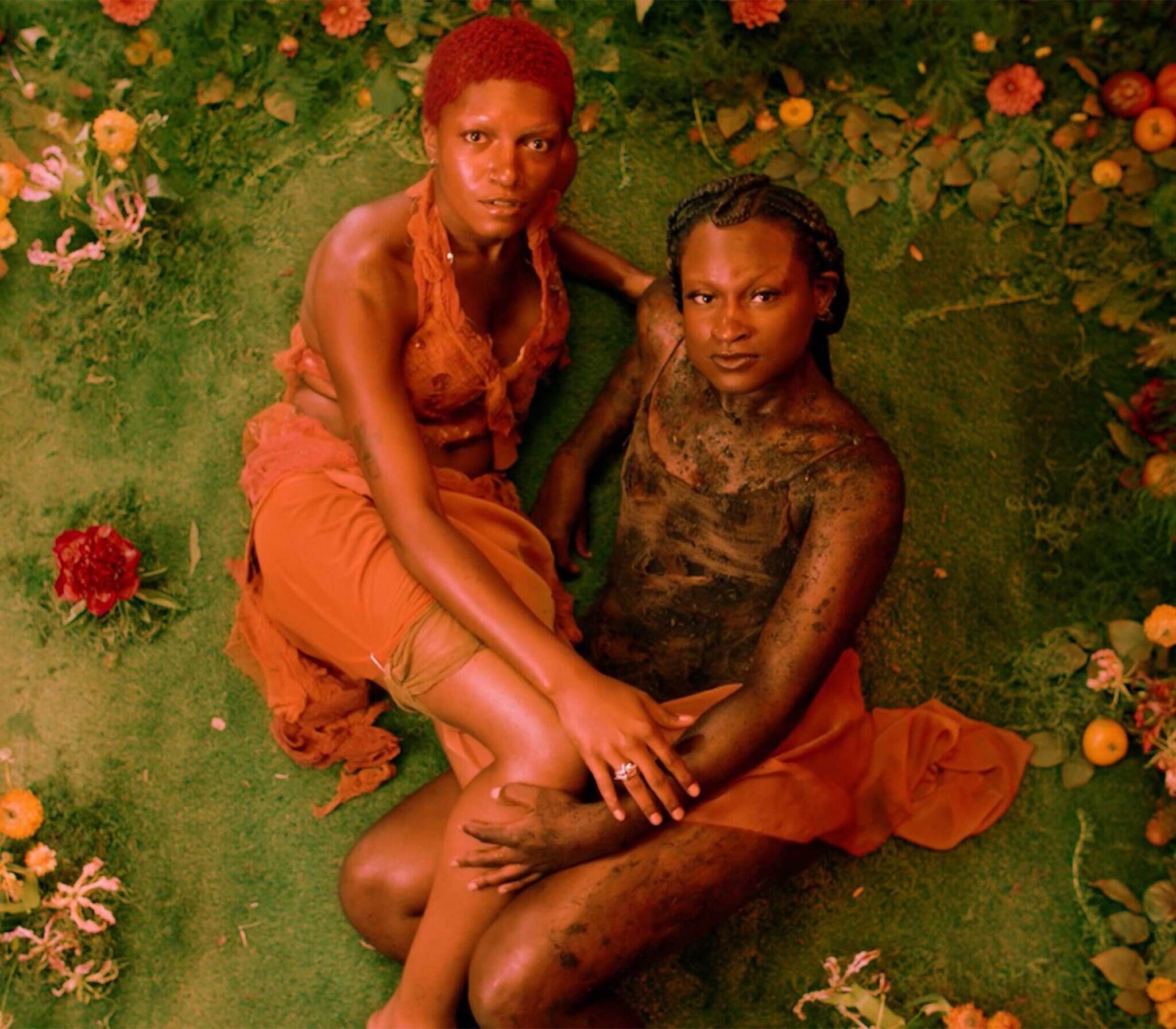Narrator:
Welcome to Artists Among Us Minisodes from the Whitney Museum of American Art. For us, this spring and summer are all about the 2024 Whitney Biennial. Over the course of the exhibition, we’ll be sitting down with some of the artists to talk about their work and what it means to be making art in the present unfolding moment.
Today we hear from Maja Ruznic about one of the two paintings that she has in the Biennial, called The Past Awaiting the Future/Arrival of Drummers. The painting is huge, over twelve feet wide, and more than eight feet tall. Figures and shapes painted in rich seductive colors move in every which way across the crowded canvas. Here’s Maja Ruznic:
Maja Ruznic:
My name is Maja Ruznic and I'm a painter and I live in Placitas, New Mexico. I don't normally work in this horizontal orientation. Usually, my paintings are smaller than this kind of giant format. My palettes are colorful and I'm really in love with highly pigmented color. So having something like a cadmium red light right next to a cobalt green turquoise, it's supposed to make your eyes almost have a seizure. So I'm really interested in color level and how color can operate and have encoded meaning that is not available to our rational mind.
And I really believe that through our senses and when our body is really affected, great changes can happen. And I think that's why people like to go to cathedrals, even if you're not religious, or mosques, there's a sense of awe that can fill the body. And I know there's a lot of research about how awe is a very restorative and opening emotion and how we need it as a species and how it differentiates us from other species. So the kind of awe I like to create with color and form and figures like this female figure here who is both crying, but she's also in a way the most powerful. She's the only one confronting us.
I think my history has colored me in a certain way where I have certain preferences and I think sadness is the one thing that my body has remembered and I've learned to love. I find beauty in sadness and I do think that has a lot to do with my background. I don't know if I would have the same love for all things full of pathos if I had a different upbringing.
Narrator:
Ruznic grew up moving from country to country after she and her mother fled Bosnia when war broke out when she was a child in the 90s. Eventually, they landed in San Francisco.
Maja Ruznic:
When you think about a conflict, most wars that are fought are often trying to reconcile or undo some past injustice. So that's the war that I fled from. It was the Serbs trying to undo the injustices of the Ottoman Empire. And I think there's something so strange and absurd about the desire to cleanse the past by doing something now that is equally damaging. So there's this sense of constantly pulling the past in order to “fix” or to amend. But I think there's always something dark and violent that arises out of that desire to fix that we may not even be aware of at the time. We can only tell that in the future.
So this piece is really about that. It's thinking about how the past is being dragged and how there are victims of the present that are somehow being used to undo something from the past. Yet time is kind of always marching on. So I think of all the feet in this painting, and most of them are in profile. Some of them are moving to the left, a couple of them are moving to the right, and some of them are facing us. So that was me trying to fuse the sense of all times existing in this one plane, collapsing the sense of actual moving time, and freezing it in this moment.
I think my figures if you really look at their expressions they're quite sad and things have happened to them, but they're survivors. They're kind of these wounded healers who are only as powerful as they are because of the stuff they went through. In alchemy, they talk about the transmutation of materials. The alchemist works on that in their lab to get to the gold. In Jungian psychology, they talk about all the different stages that your psyche needs to go through in order to achieve this kind of unified state. And I think I as a person and I as a painter am working that out as I paint. I'm constantly trying to make something moving for others out of these sad little parts that are inside of me.
Narrator:
Artists Among Us Minisodes are produced at the Whitney Museum of American Art by Anne Byrd, Nora Gomez-Strauss, Kyla Mathis-Angress, Sascha Peterfreund, Emma Quaytman, and Emily Stoller-Patterson.


.jpg)